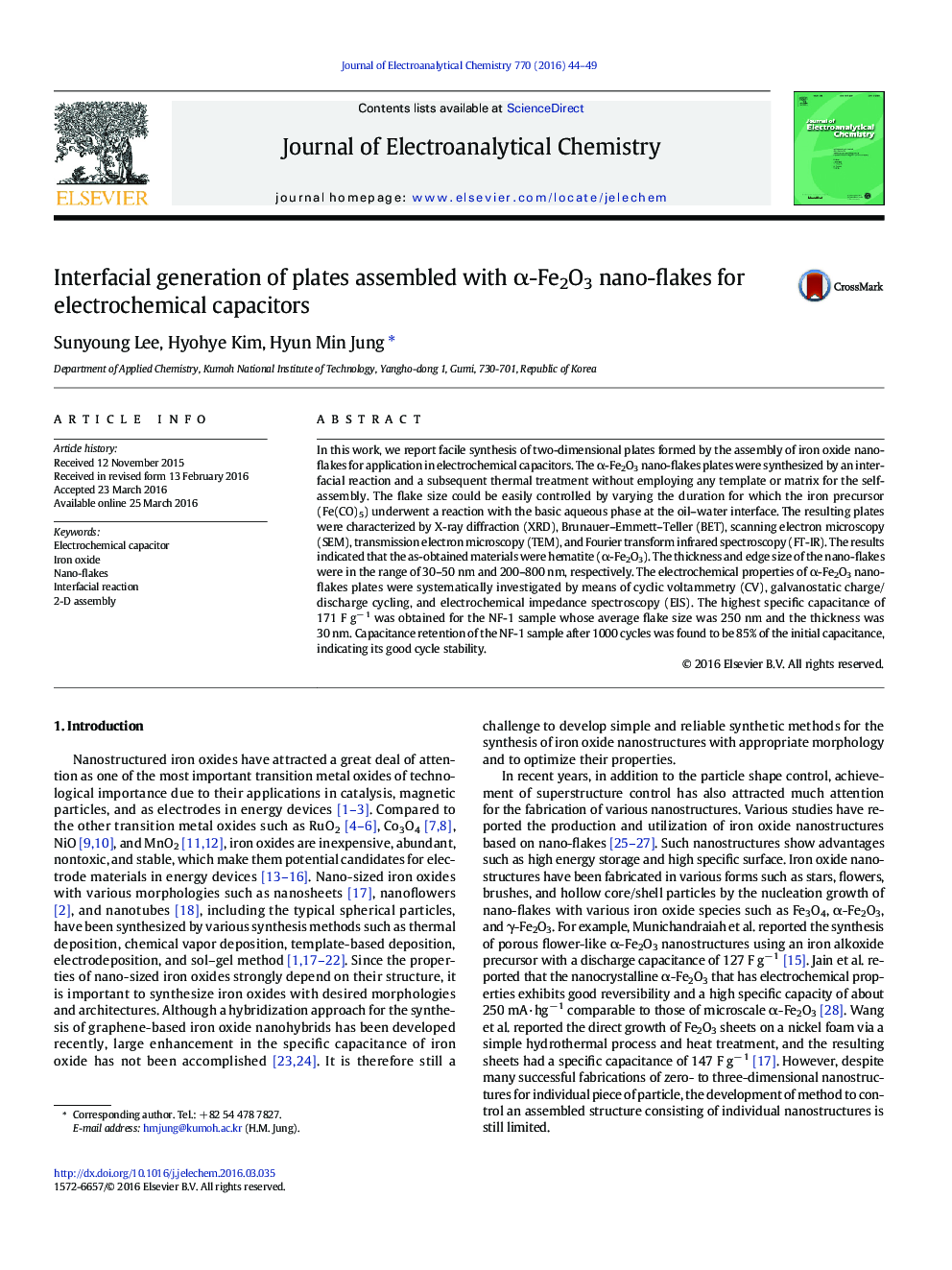| Article ID | Journal | Published Year | Pages | File Type |
|---|---|---|---|---|
| 217876 | Journal of Electroanalytical Chemistry | 2016 | 6 Pages |
•α-Fe2O3 plates consisted of assembled nano-flakes were prepared.•The formation was performed through interfacial reaction of Fe(CO)5 and growth into nano-flakes.•The electrochemical behavior for electrode materials of capacitor was tested.•α-Fe2O3 plates assembled with nano-flakes gave enhanced results in specific capacitance.
In this work, we report facile synthesis of two-dimensional plates formed by the assembly of iron oxide nano-flakes for application in electrochemical capacitors. The α-Fe2O3 nano-flakes plates were synthesized by an interfacial reaction and a subsequent thermal treatment without employing any template or matrix for the self-assembly. The flake size could be easily controlled by varying the duration for which the iron precursor (Fe(CO)5) underwent a reaction with the basic aqueous phase at the oil–water interface. The resulting plates were characterized by X-ray diffraction (XRD), Brunauer–Emmett–Teller (BET), scanning electron microscopy (SEM), transmission electron microscopy (TEM), and Fourier transform infrared spectroscopy (FT-IR). The results indicated that the as-obtained materials were hematite (α-Fe2O3). The thickness and edge size of the nano-flakes were in the range of 30–50 nm and 200–800 nm, respectively. The electrochemical properties of α-Fe2O3 nano-flakes plates were systematically investigated by means of cyclic voltammetry (CV), galvanostatic charge/discharge cycling, and electrochemical impedance spectroscopy (EIS). The highest specific capacitance of 171 F g− 1 was obtained for the NF-1 sample whose average flake size was 250 nm and the thickness was 30 nm. Capacitance retention of the NF-1 sample after 1000 cycles was found to be 85% of the initial capacitance, indicating its good cycle stability.
